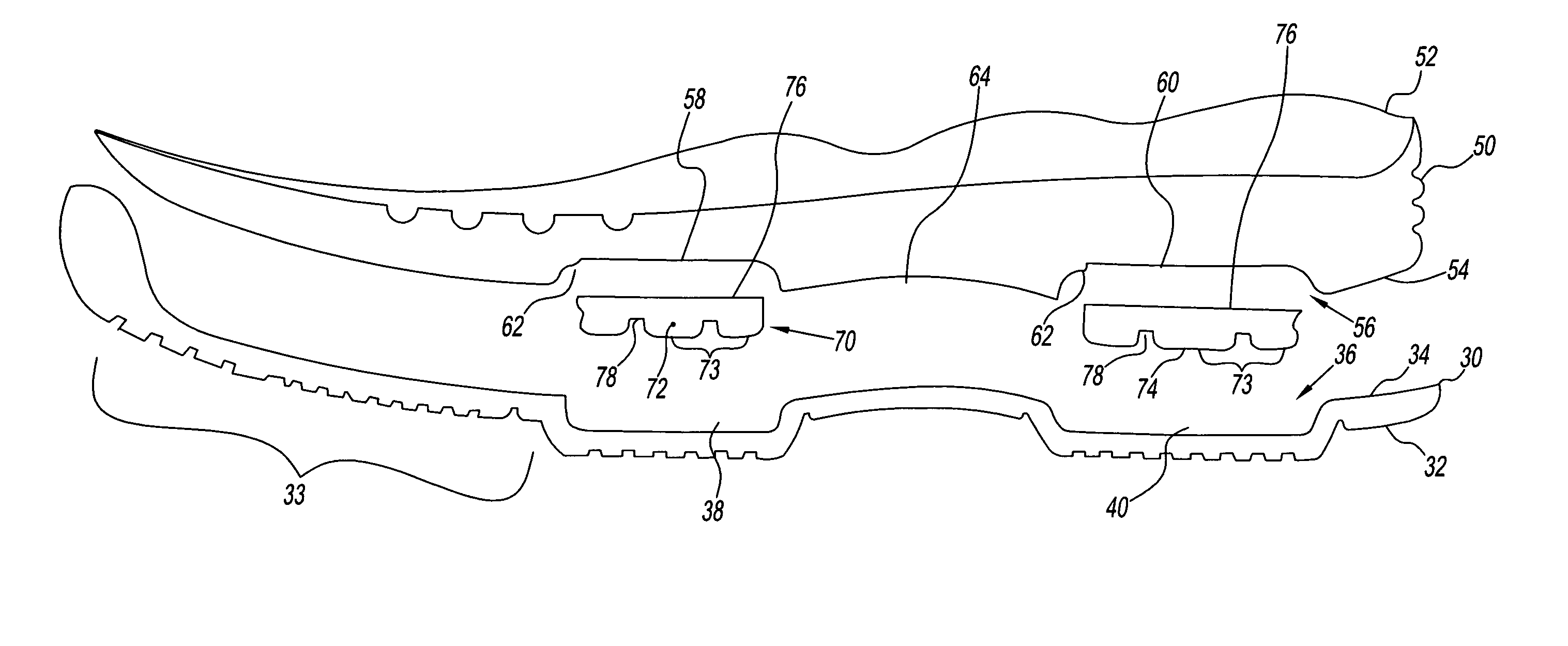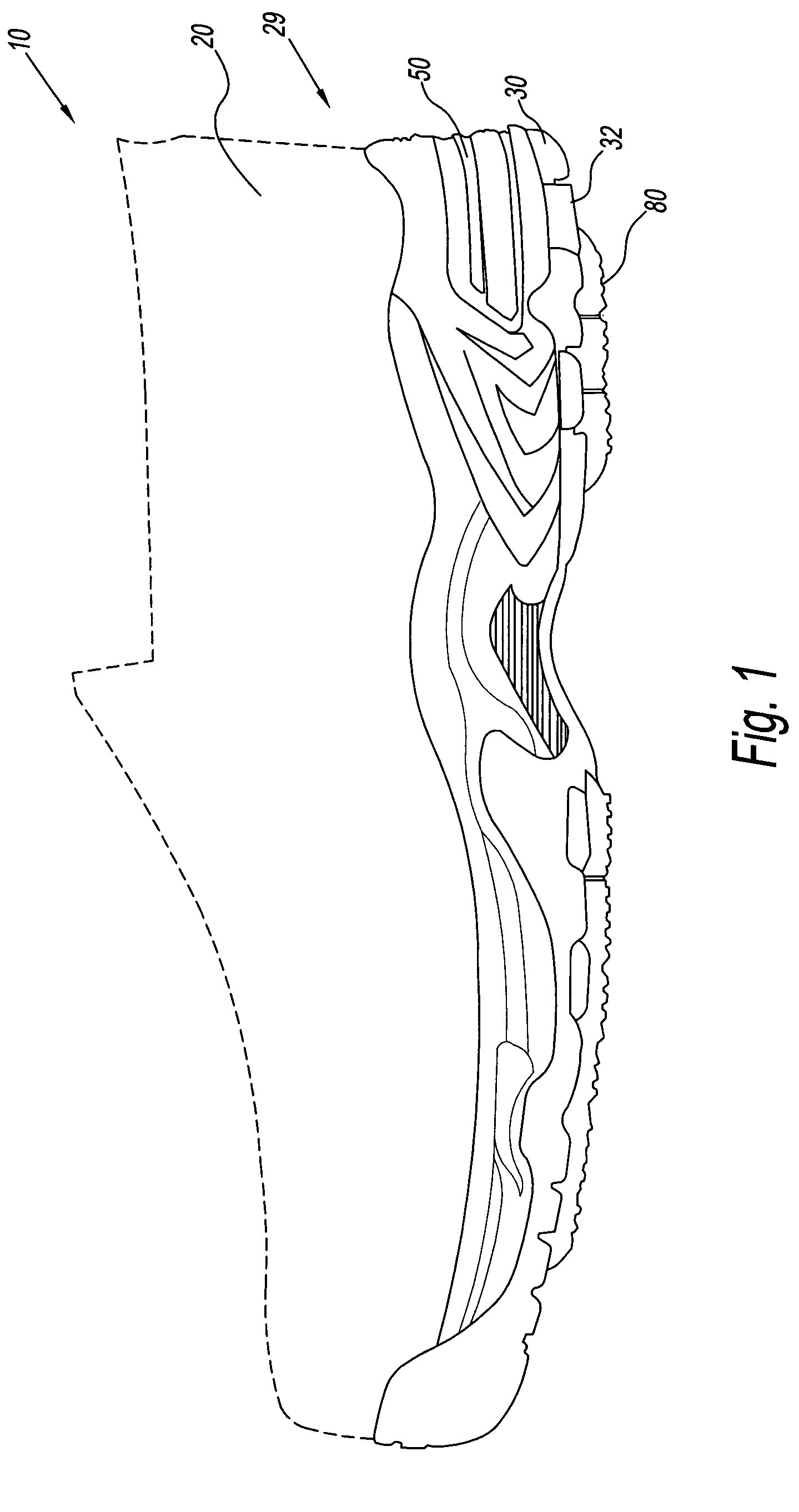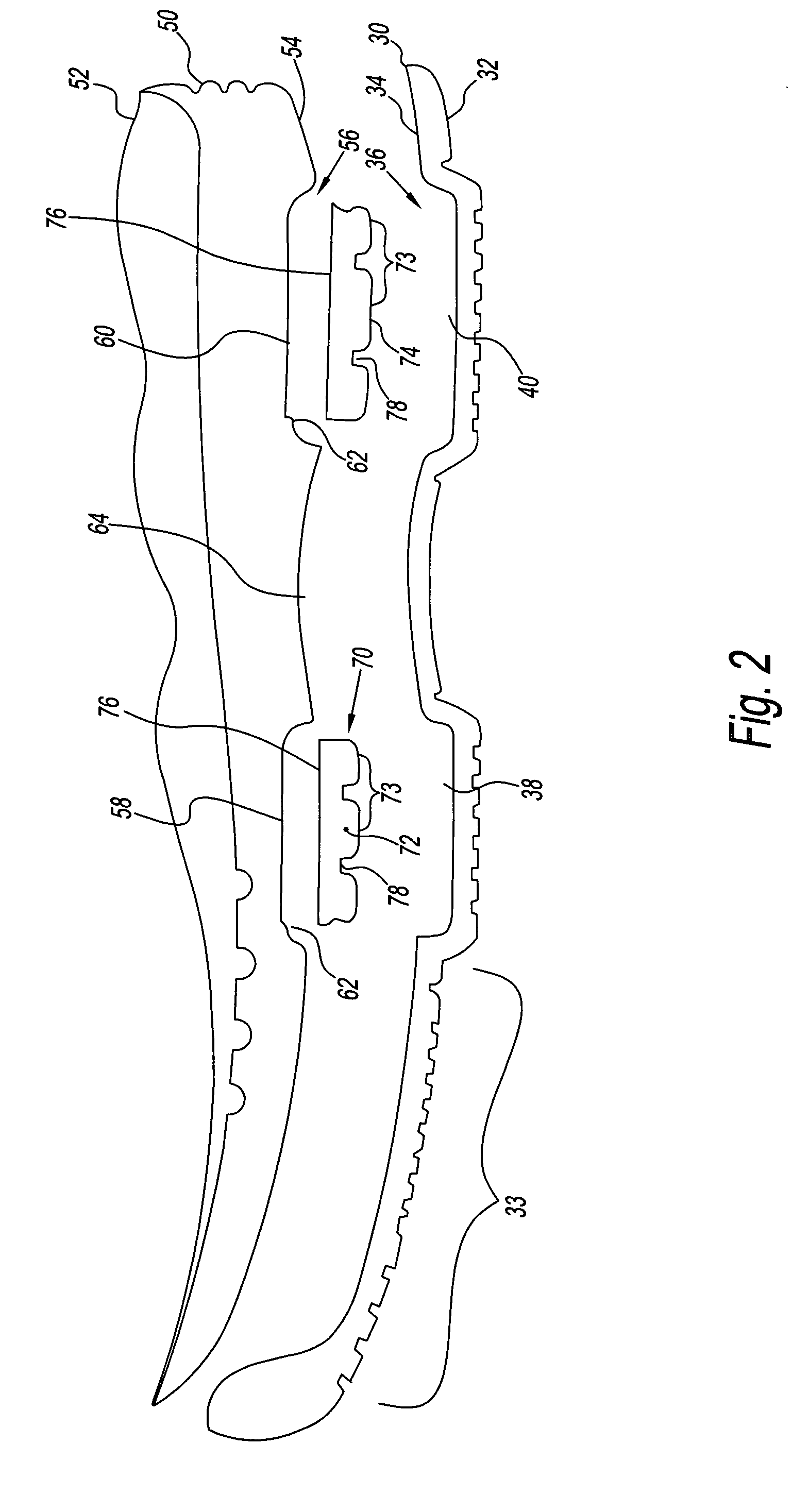Footwear system
a shoe and shoe technology, applied in the field of shoes, can solve the problems of high production cost of the bladder, inability to meet the needs of consumers, so as to improve the leverage of the ground contact, reduce the compression of the passageway, and provide visibility to consumers
- Summary
- Abstract
- Description
- Claims
- Application Information
AI Technical Summary
Benefits of technology
Problems solved by technology
Method used
Image
Examples
Embodiment Construction
[0029]Referring to the drawings and, in particular, FIG. 1, there is provided a shoe according to the present invention generally represented by reference numeral 10. The shoe 10 is shown as an athletic shoe. However, one skilled in the art should appreciate that the shoe may be any type of shoe known in the art, including but not limited to, a dress shoe, a boot, a cross training shoe, a running shoe, a sneaker, a flat, a high heeled shoe, an overshoe, a pump, a loafer, a moccasin, a padded sock, a slipper, or any other shoe for athletic, dress or comfort.
[0030]The shoe 10 has an upper 20 connected to a sole unit 29. The sole unit 29 is a combination of the midsole 50 and an outsole 30. The upper 20 is a portion of the shoe 10 covering a foot above the sole unit 29. The sole unit 29 has the ground contacting outsole 30 including a number of air bulges 80. The number of air bulges 80 extend toward the ground or groundwardly from the outsole 30. Preferably, the number of air bulges 8...
PUM
 Login to View More
Login to View More Abstract
Description
Claims
Application Information
 Login to View More
Login to View More - R&D
- Intellectual Property
- Life Sciences
- Materials
- Tech Scout
- Unparalleled Data Quality
- Higher Quality Content
- 60% Fewer Hallucinations
Browse by: Latest US Patents, China's latest patents, Technical Efficacy Thesaurus, Application Domain, Technology Topic, Popular Technical Reports.
© 2025 PatSnap. All rights reserved.Legal|Privacy policy|Modern Slavery Act Transparency Statement|Sitemap|About US| Contact US: help@patsnap.com



